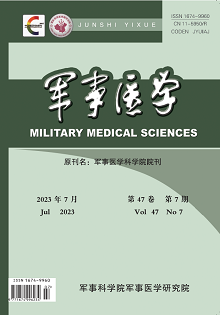Original articles
JIN Lu, DONG Weiyun, BIAN Xiangyu, YANG Danfeng, LI Xi, GUO Changjiang, GAO Weina
Objective To observe the effects of nutritional preparations on the function of HPO axis, HPA axis and thermogenesis of brown fat in female SD rats exposed to acute cold. Methods After 3 days of adaptive feeding, 40 adult female SD rats were divided into the normal control group (C), cold exposure group 1 (CE-1), cold exposure group 2 (CE-2), nutrition preparation group 1 (Nmi 1) and nutrition preparation group 2 (NMel 2), with 8 rats in each. All the five groups were raised in a room with normal temperatures and were free to eat and drink. Group C and CE were given 2 ml distilled water every day, while group N was given 2 ml nutritional preparations daily. As the survival experiment, after 14 days of intragastric administration, the animals in the CE-1 group and NMUI 1 group were exposed to cold at -15℃ until all the experimental animals died, and the time of death was recorded. During the acute cold exposure experiment, after 14 days of intragastric administration, the animals in the CE-2 group and NMel 2 group were exposed to cold at -15℃ for 4 hours, and the anal temperature was measured immediately after the rats left the cabin. The serum, uterus, ovary and brown fat were taken, and the levels of such serum hormones as follicle stimulating hormone (FSH), luteinizing hormone (LH), norepinephrine (NE) and the expressions of thermogenic related proteins such as mitochondrial uncoupling protein 1 (UCP1) were detected via enzyme linked immunosorbent assay (ELISA). The expressions of follicle stimulating hormone receptors (FSHRs), luteinizing hormone receptors (LHRs) and uncoupling protein (UCP1) were detected by Western blotting. Results Nutritional preparations could prolong the survival time to some extent and increase the core temperature of female SD rats exposed to acute cold (P<; 0.05). Acute cold exposure significantly up-regulated the expressions of FSHR and LHR protein in the rat ovary and decreased the serum levels of FSH and LH (P<; 0.05), while nutritional preparation could do the opposite (P<; 0.05). The levels of CRH, EPI and NE decreased significantly under acute cold exposure (P<; 0.05), and nutritional preparations could change serum hormones more significantly. Acute cold exposure down-regulated the expressions of PGC-1α and UCP1 protein in brown fat (BAT) (P<; 0.05) while nutritional preparations could increase these expressions to normal. Conclusion Nutritional preparations can increase the core temperature of animals exposed to acute cold, improve the levels of HPO axis and HPA axis related hormones, regulate the expressions of HPO axis related receptors in the uterus and ovary, and promote BAT thermogenesis and cold resistance by promoting the expressions of thermogenesis related proteins.
